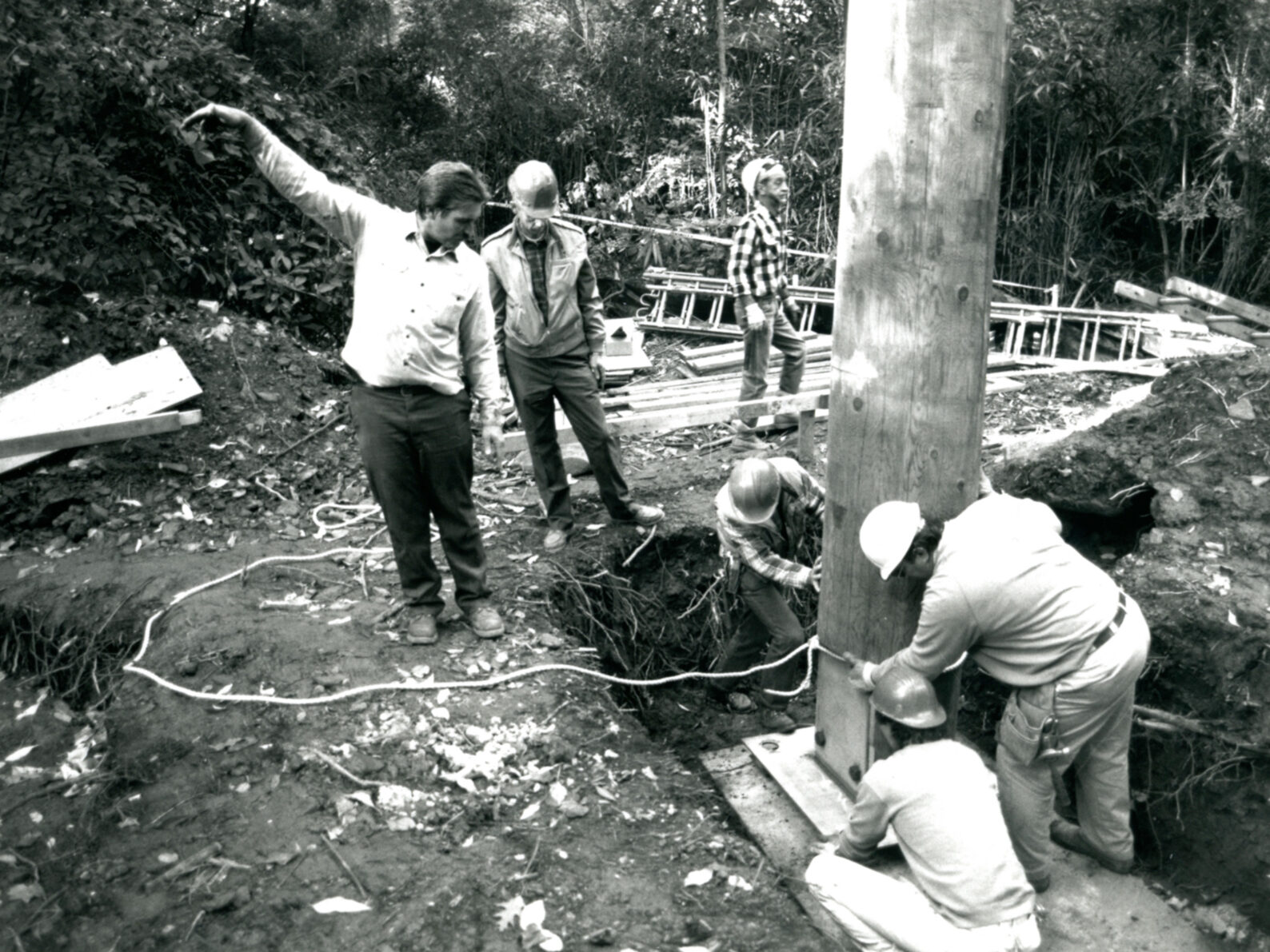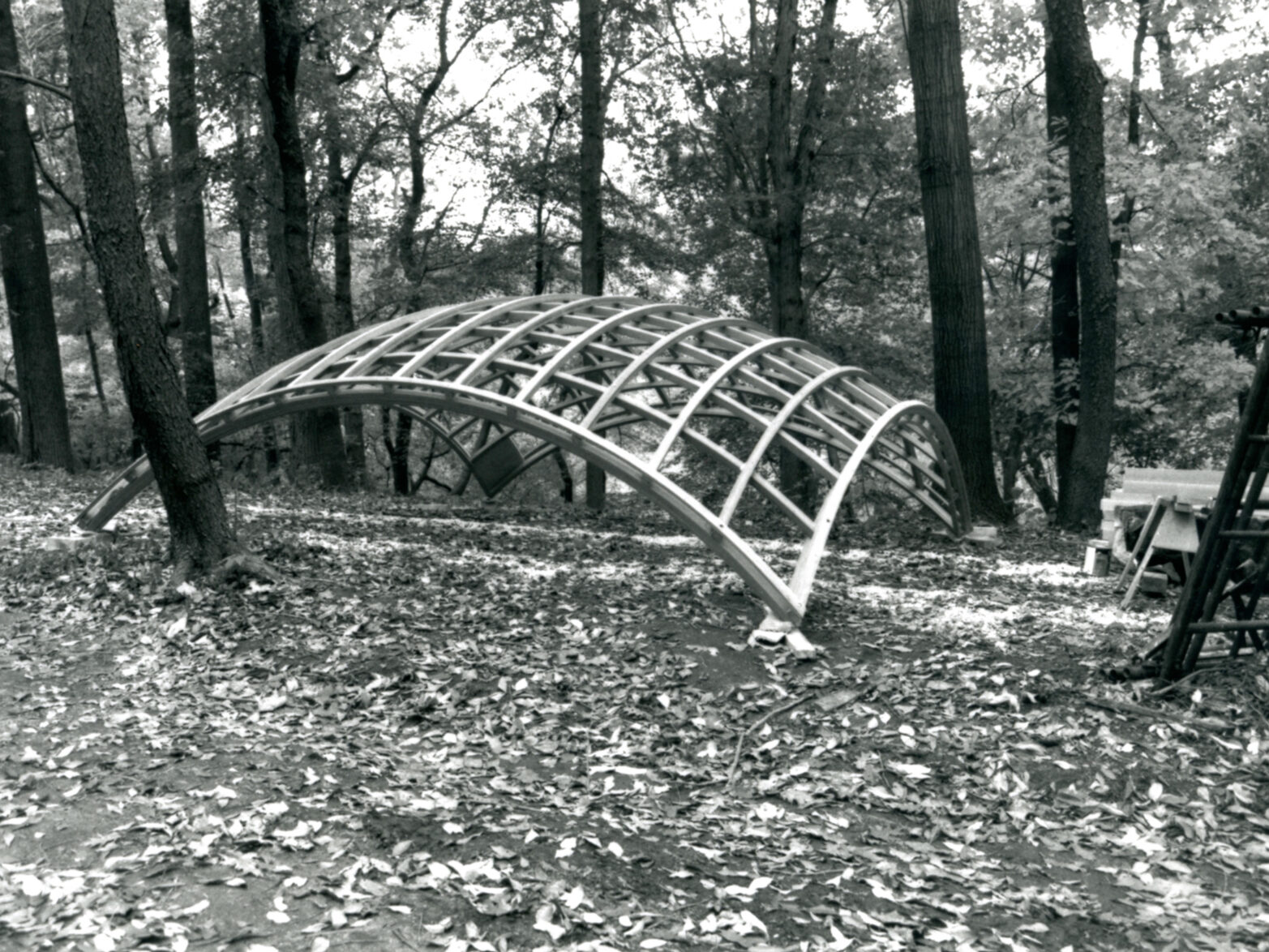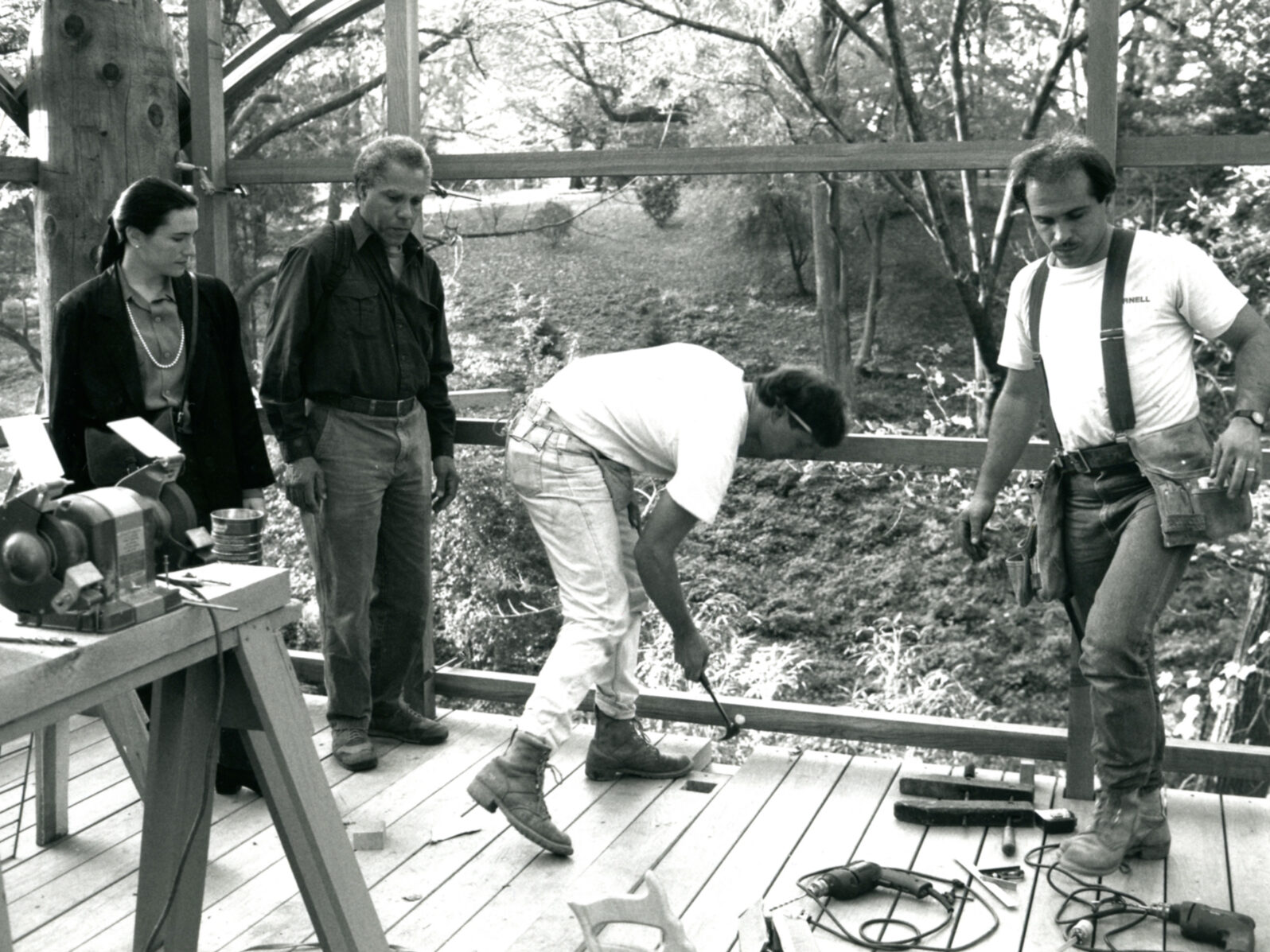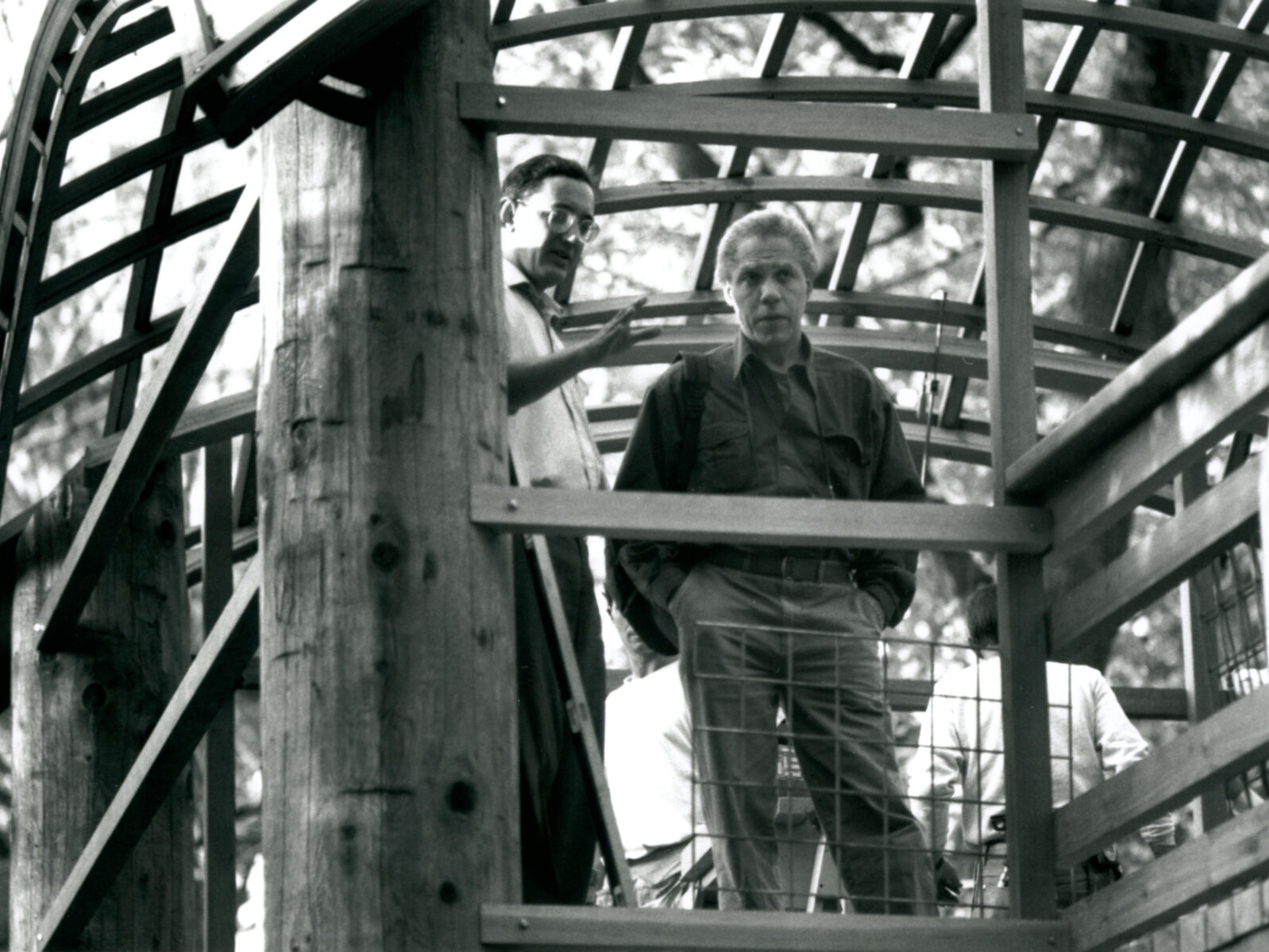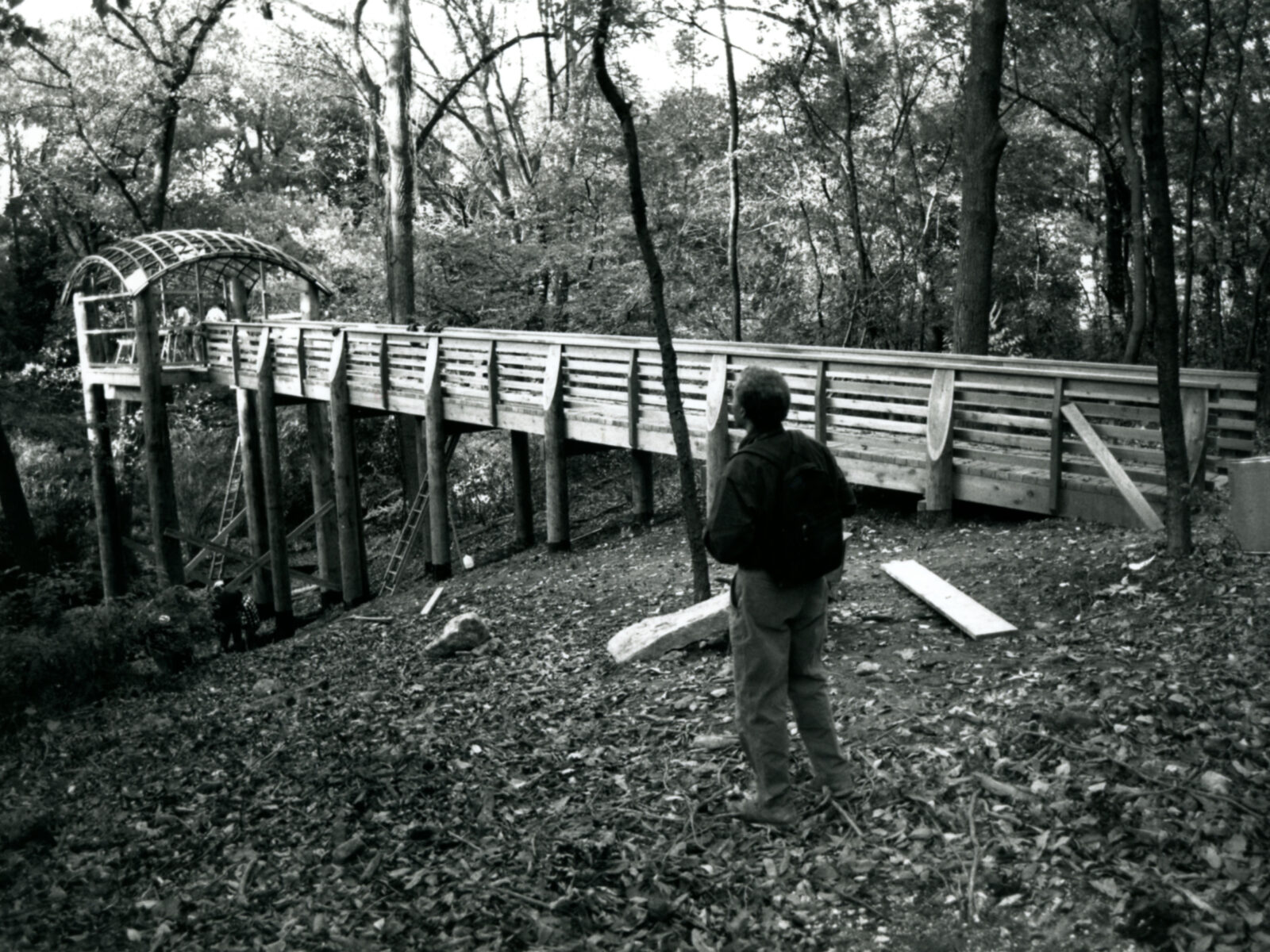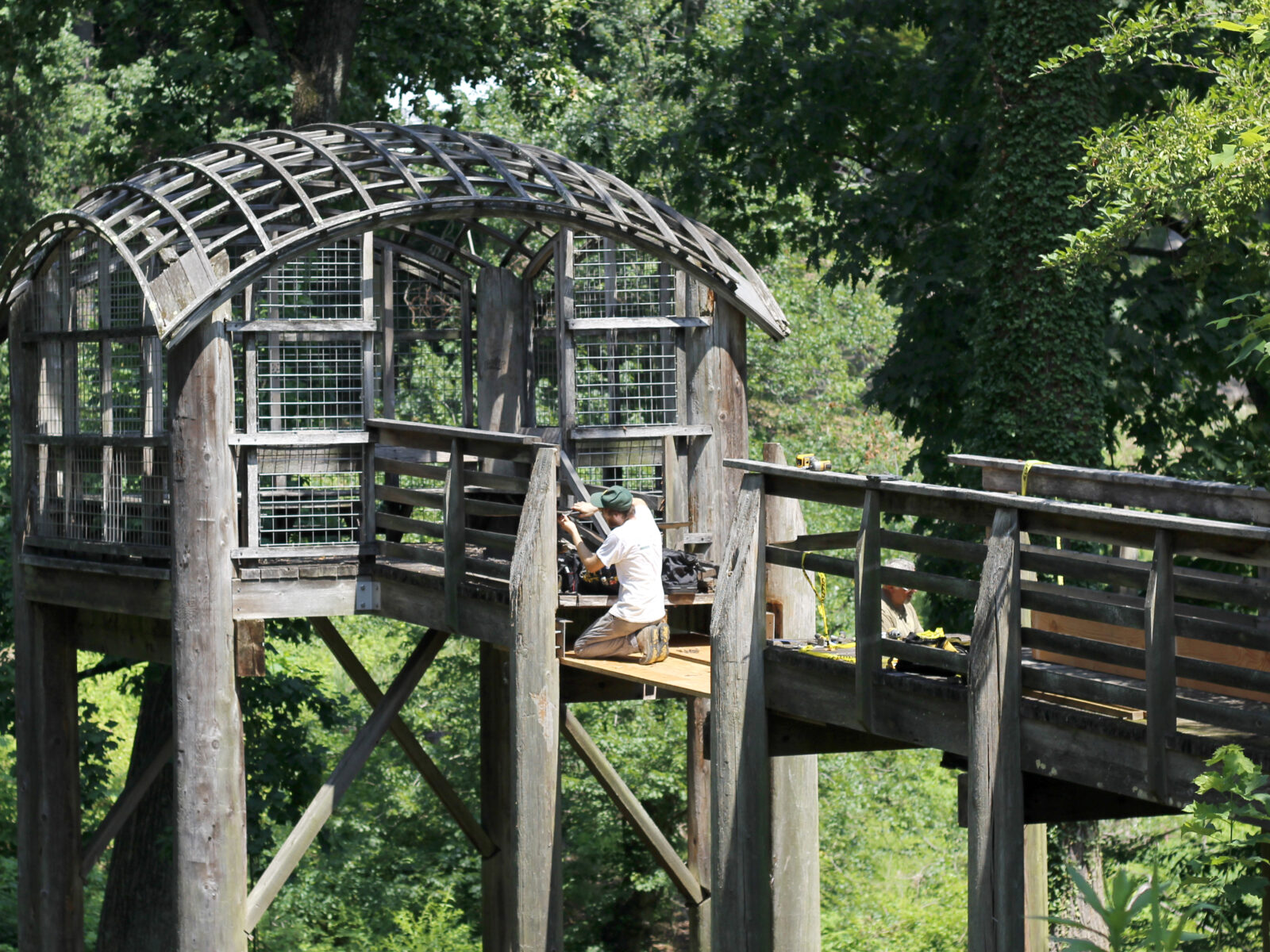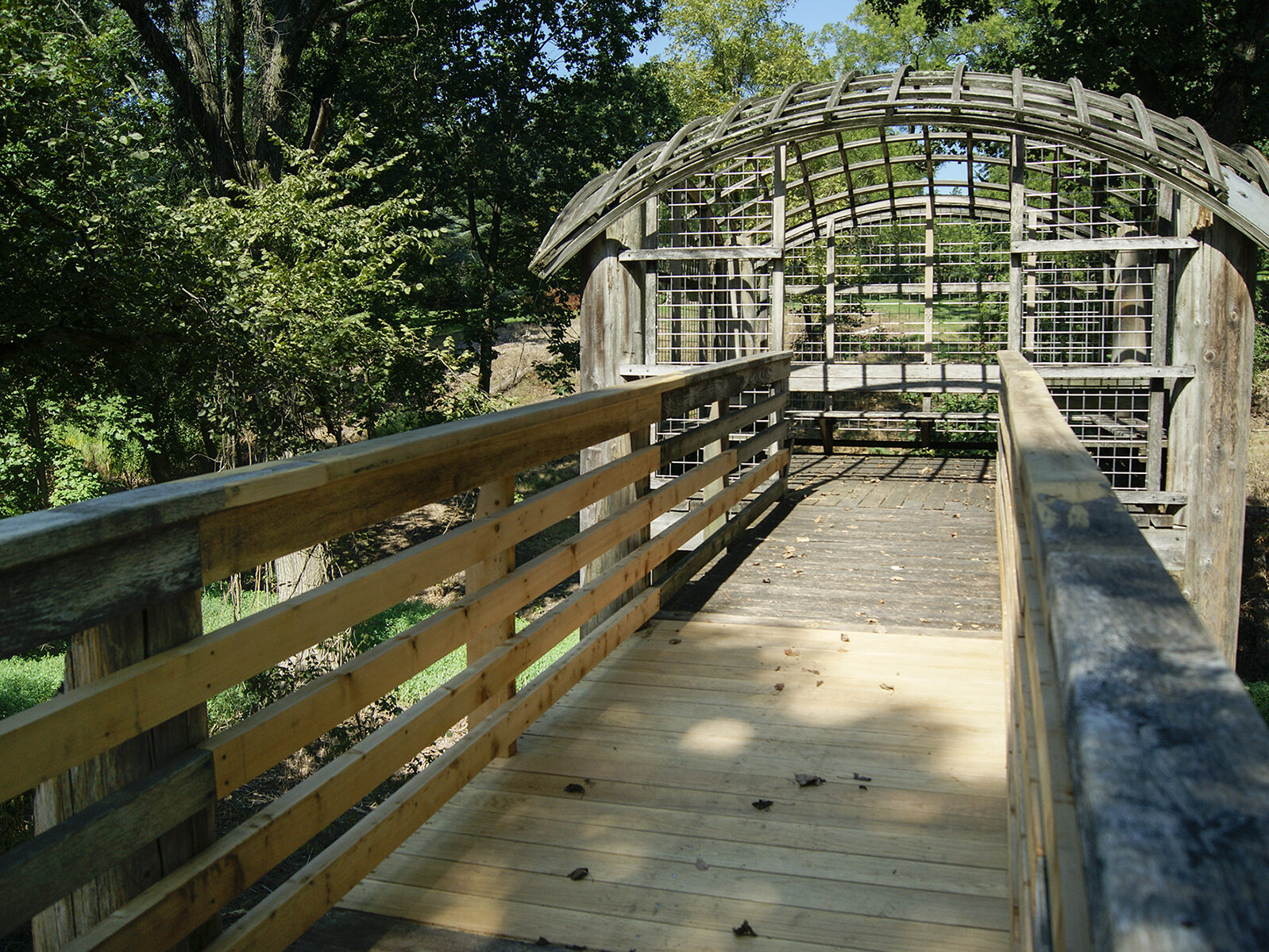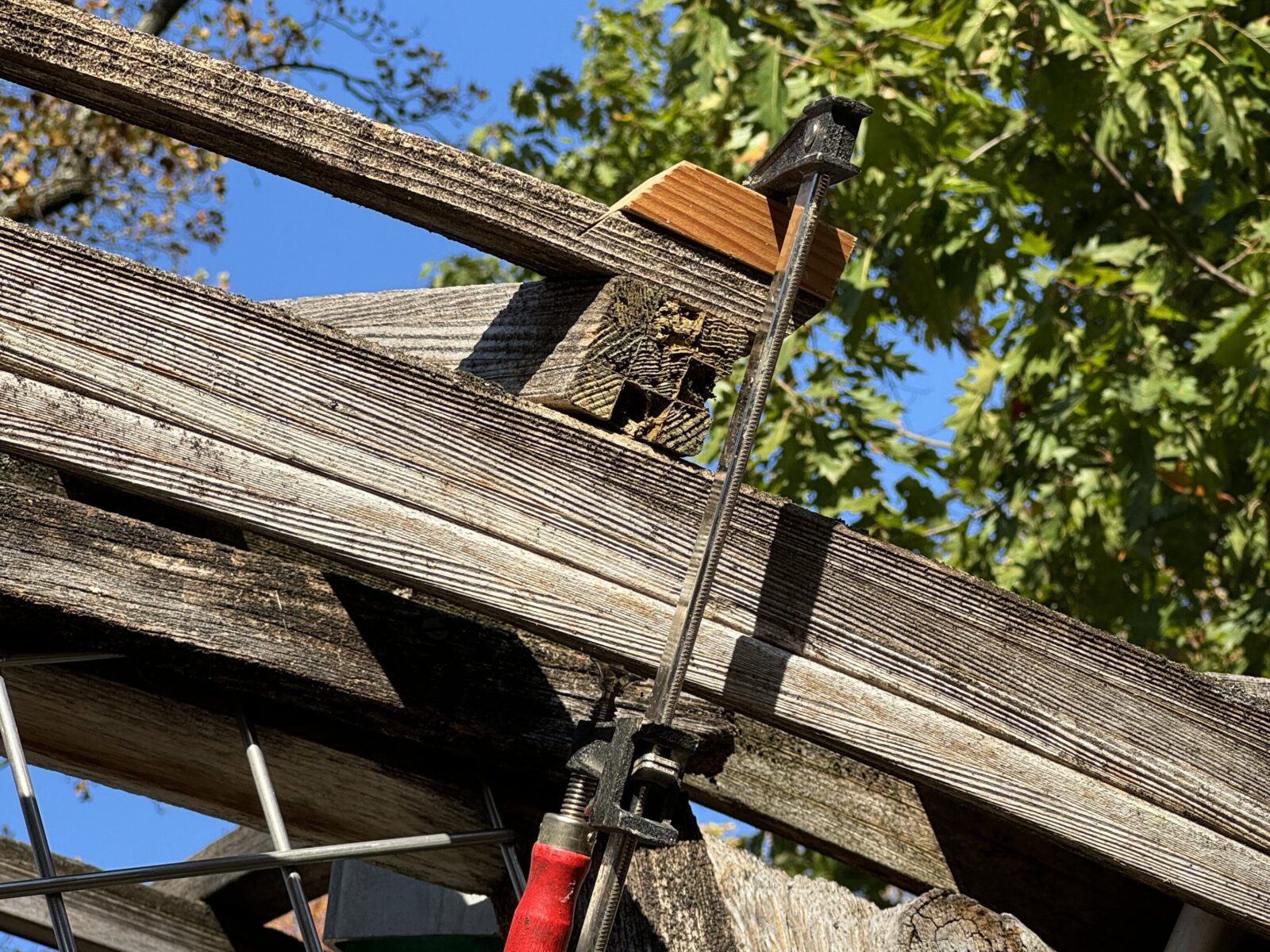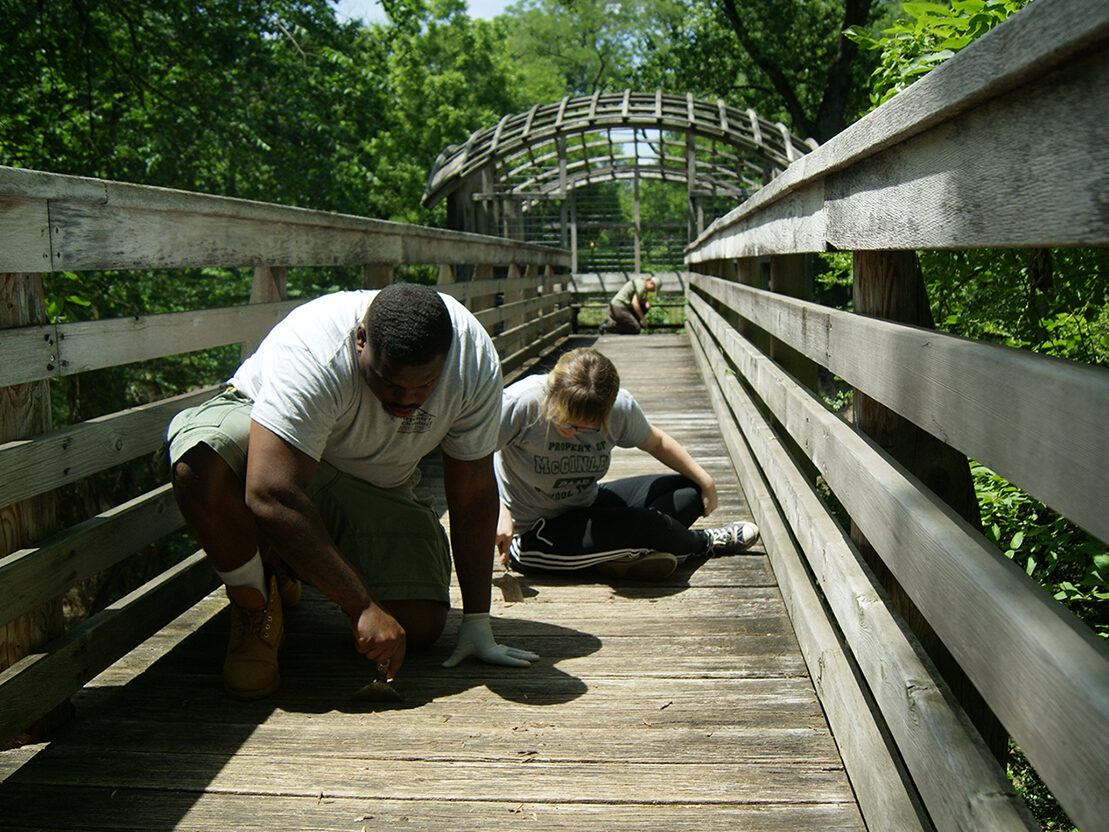**Please note: Due to structural safety issues, Pavilion in the Trees is closed to the public until further notice. The Association for Public Art, along with an engineering firm and the Conservation Team at Fairmount Park Conservancy, are working to assess what needs to be done in order to stabilize the structure and reopen it to the public. Stay tuned for more information.
When Pavilion in the Trees (1993) by artist Martin Puryear was commissioned and installed by the Association for Public Art (aPA) decades ago, it was envisioned as a permanent amenity—a treehouse-like retreat for generations to enjoy, nestled in the Lansdowne Glen of Philadelphia’s West Fairmount Park.
But what does “permanent” mean for a wooden structure exposed to the elements? Is anything truly built to last forever?
During a recent visit to Pavilion in the Trees with Tiny WPA and Fairmount Park Conservancy, we reflected on this question of longevity and the challenges of preserving a wooden structure that’s vulnerable to the environment and public interaction.
When we were commissioning works at the time, we called the works ‘permanent’ with the intent that they would be constantly kept up and kept out there for as long as possible. I think there’s been a change in the way people in our field look at the duration of works of public art now.
We don’t know of any material that can withstand the outdoors indefinitely, but strategic conservation can help these outdoor works endure. “Everything needs maintenance over time,” says Tara Rasheed of Fairmount Park Conservancy. “Nothing is maintenance free.”
For Pavilion in the Trees, maintenance requires careful planning, expertise, and investment, and this is exactly the approach we take in collaboration with our friends at Fairmount Park Conservancy. Their Conservation Supervisor, Andrew Staples, helps us preserve Pavilion in the Trees and our other wooden installations like Embodying Thoreau in Pennypack Park.
What Ongoing Care Looks Like
Keeping Pavilion in the Trees in good shape requires annual care that involves clearing debris from floor joists, removing biological growth and graffiti, replacing damaged wooden elements, treating rot, and removing encroaching branches.
“It’s a tough environment, certainly in the summer,” says Staples. “The moisture content is always kind of high—it’s kind of wet all the time. And then this time of year [in the fall] you get fissuring because it’s getting direct sun. But we clean and maintain it in the spring and then make our repairs through the summer and the fall. We do an assessment and plan for the upcoming year.”
Staples adds, “These decking boards are all oak, and we need to clean between them because they get clogged from foot traffic and from leaves and from dirt and from their own deterioration, so then water does not clear through just like you’d want it to with a normal deck at your house. And for the canopy and any sort of staining, we clean with D/2, which is a pretty common cleaning product that’s used in conservation.”
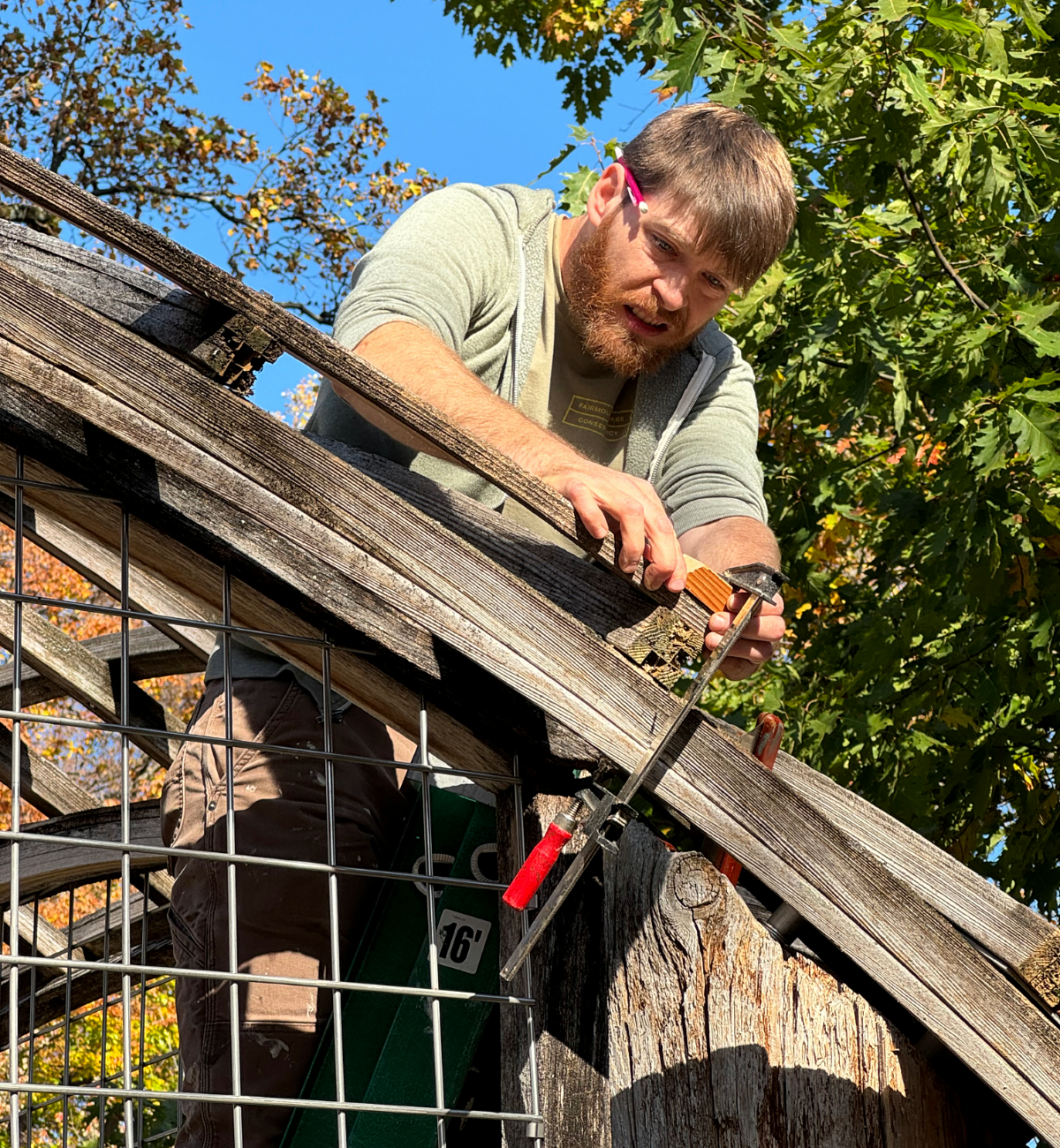
What about graffiti? “You have to just sand it down,” says Laura Griffith, aPA’s Deputy Director. “Wood, unlike bronze which we put a protective wax coating on, is porous, and so that’s the only way to get rid of it. We’ve been pretty lucky in not getting too much graffiti out here.”
Planning for the Unpredictable and Choosing Minimal Intervention
It’s impossible to predict every issue that will creep up when you’re dealing with outdoor works, but good planning early on is key.
“We had a great architectural team, KieranTimberlake and Sam Harris, who carefully considered every detail, including the choice of wood,” says Griffith. “Some woods last longer than others, and the poles supporting the piece were actually treated telephone poles, designed to withstand outdoor conditions. So they thought of everything they could, but there’s always something that happens especially in the outdoors that you don’t anticipate, and so you just have to kind of deal with it as it arises.”
And when the unforeseen does happen—like that time a tree fell onto the walkway and rendered it unusable—Staples explains that conservation specialists aim to preserve as much of the original material as possible, replacing only what’s necessary. This minimal-intervention approach helps us maintain Pavilion in the Trees with both structural and aesthetic integrity, respecting the artist’s original vision.
Rethinking Permanence: Evolving Views on the Lifespan of Public Art
So the million-dollar question is: Can a work like this last indefinitely? Here’s how we explored that question during our recent visit:
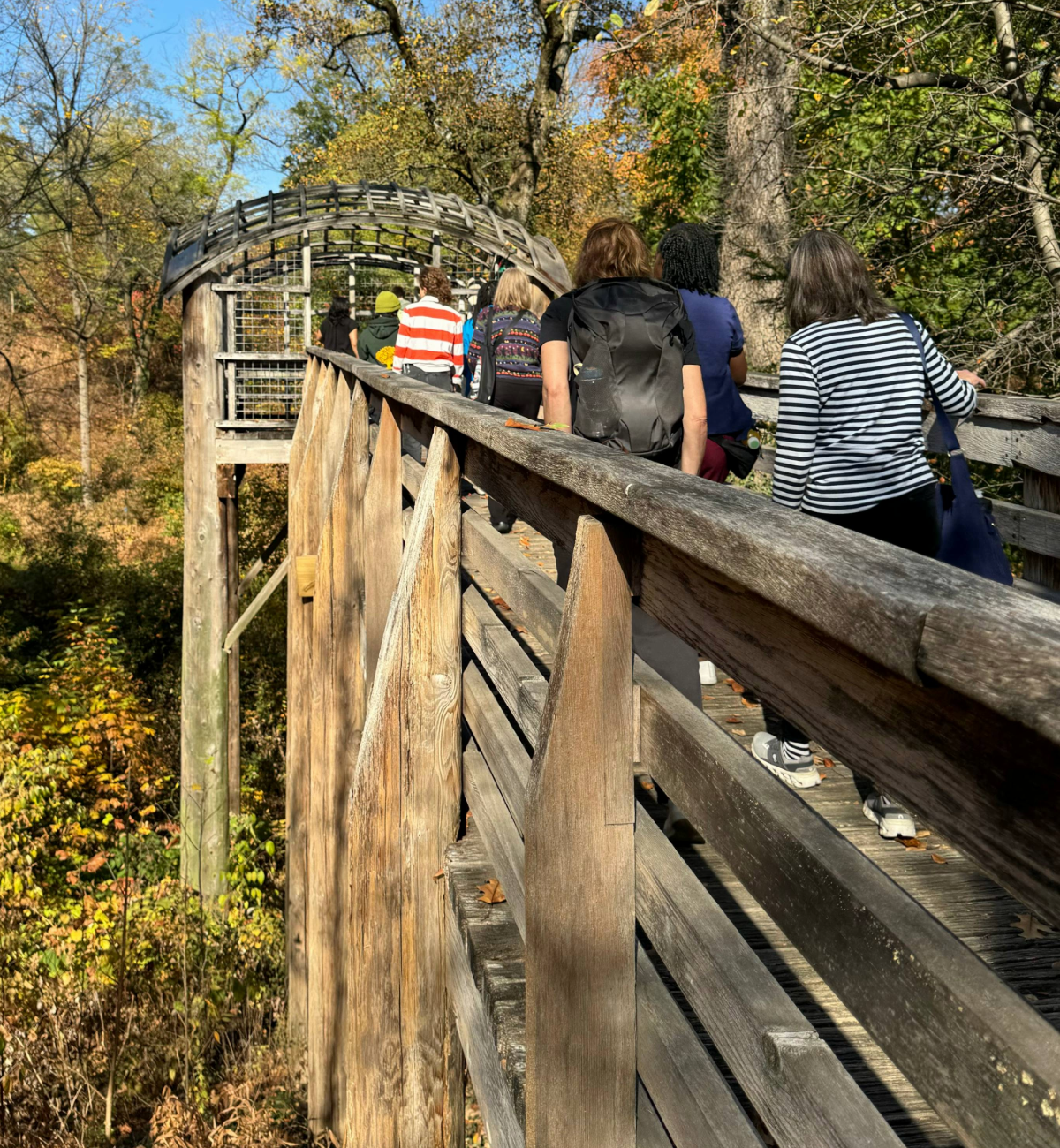
Tiny WPA Staff Member: Do you think this [pavilion] could just…keep lasting? Indefinitely?
Andrew Staples (FPC): I don’t. laughs
Laura Griffith (aPA): I think it depends on the degree of maintenance that you’re willing to be involved with, and as Andrew was saying, replacing pieces rather than the entire thing at once is the approach we’ve been taking, so…
Charlotte Cohen (aPA’s Executive Director): Nothing lasts forever!
Tiny WPA Staff Member: That’s the thing! Did they have any idea how long it might last one day?
Laura Griffith: When we were commissioning works at the time, we called the works “permanent” with the intent that they would be constantly kept up and kept out there for as long as possible. I think there’s been a change in the way people in our field look at the duration of works of public art now. You’ll see there’s a lot of temporary pieces now and that has to do also with the cost of things because it’s just really expensive to create these works that last longer. But I think people in our field are viewing time frames a little bit differently. Like maybe 15 years is okay for a piece rather than something that is going to be there “forever.” But the idea back in the 80s and the 90s was that it would be there forever.
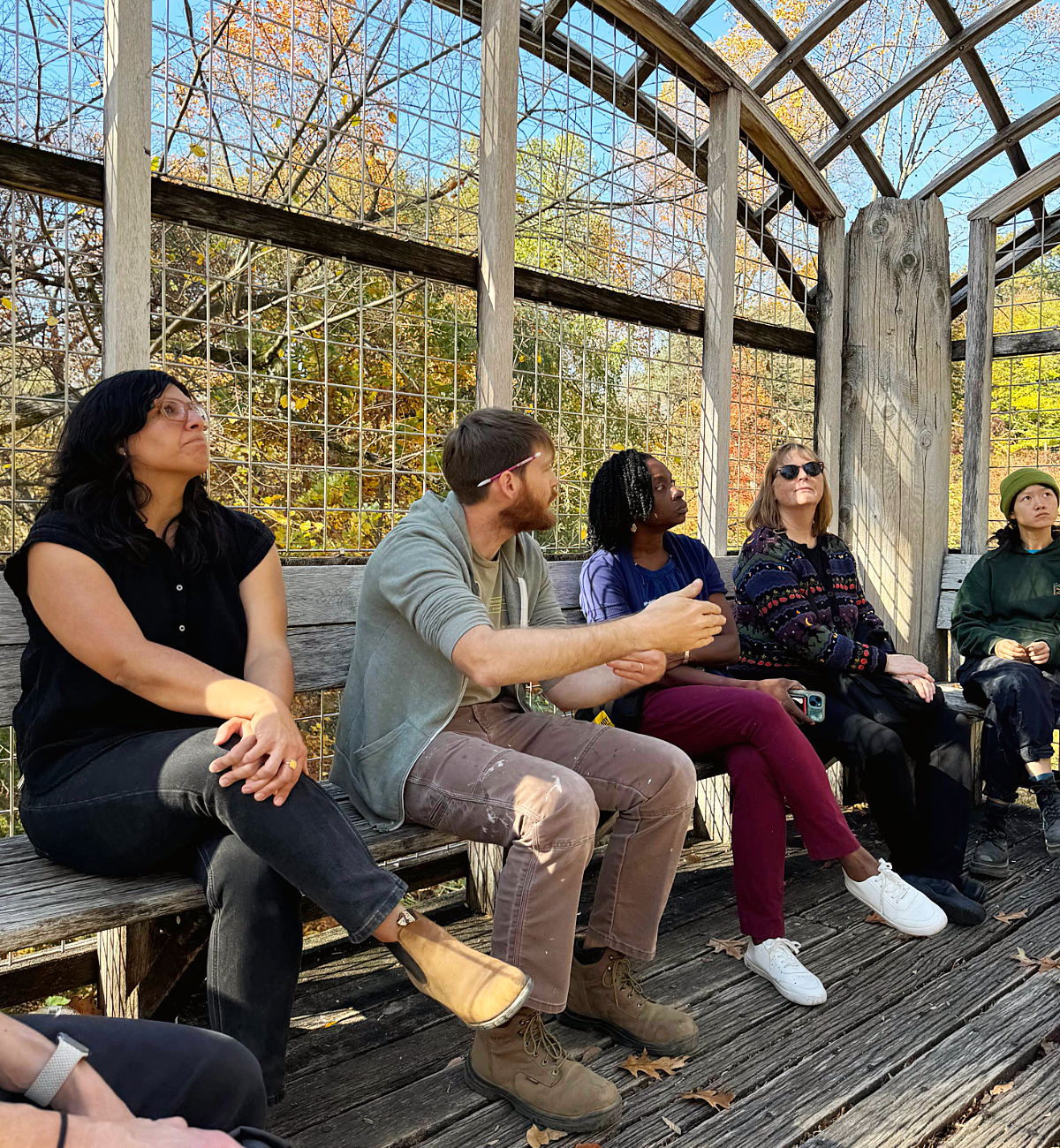
Tara Rasheed (FPC, Senior Director of Capital Projects): I do think that every choice was taken—for building something out of wood, they’ve chosen the best materials that were available to them for a wooden structure. But I think it’s about materiality, it’s about what’s available…
Laura Griffith: I mean, the Stave churches in Norway have been there for hundreds of years! So wood can last if it’s tended to with the right materials.
Tara Rasheed: And we are outside. The intention is for us to be outside.
The Legacy of Pavilion in the Trees
At the end of the day, the lifespan of a work like this depends on the ongoing care and investment. While nothing lasts forever, the Association for Public Art is fully committed to ensuring that Pavilion in the Trees continues to be enjoyed in Fairmount Park for many years to come. “It’s a really peaceful spot,” says Rasheed. “I feel like when I’m out here I always see people sitting quietly, reading books, really having a nice private time here in a special found location.”
